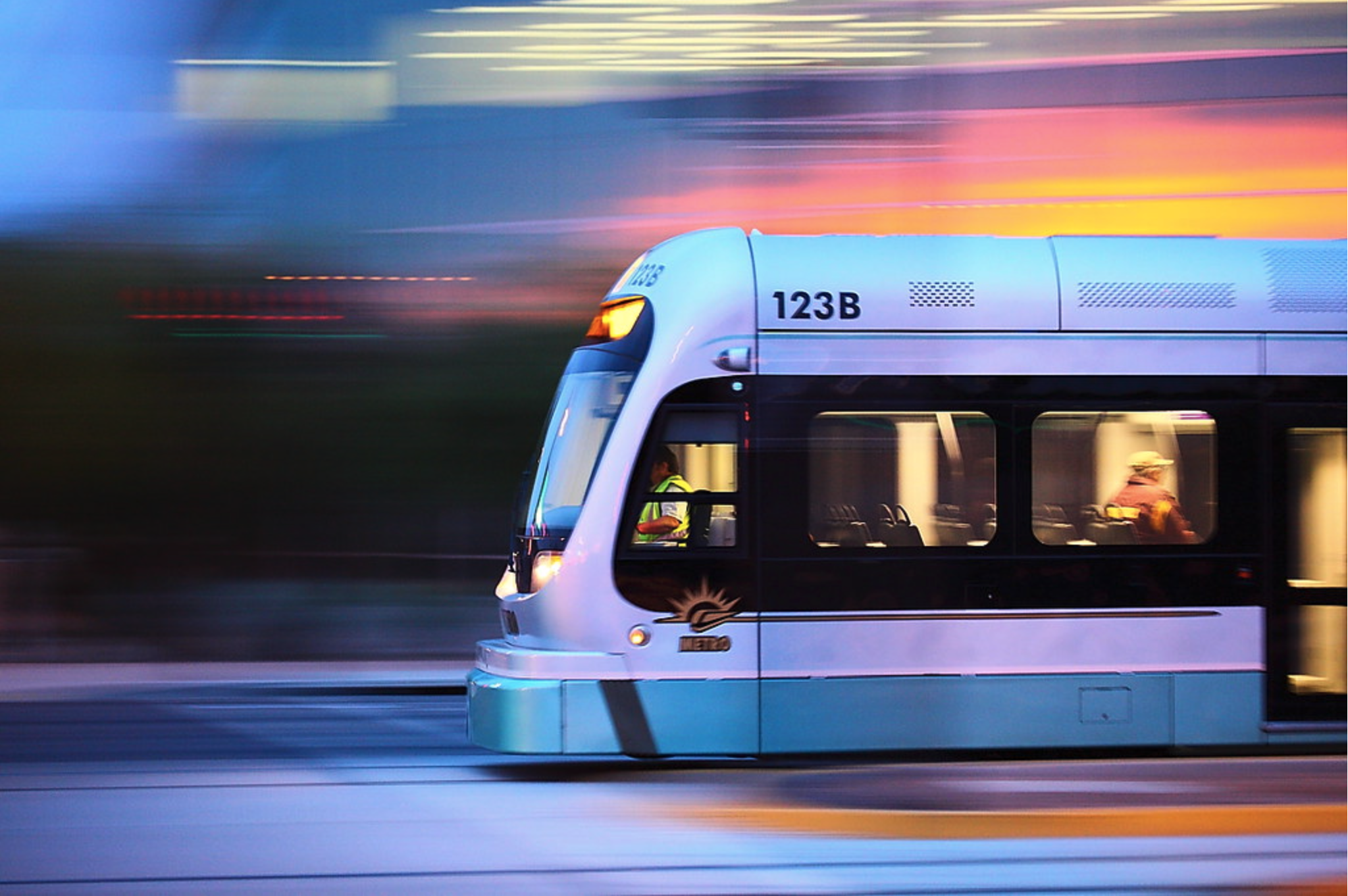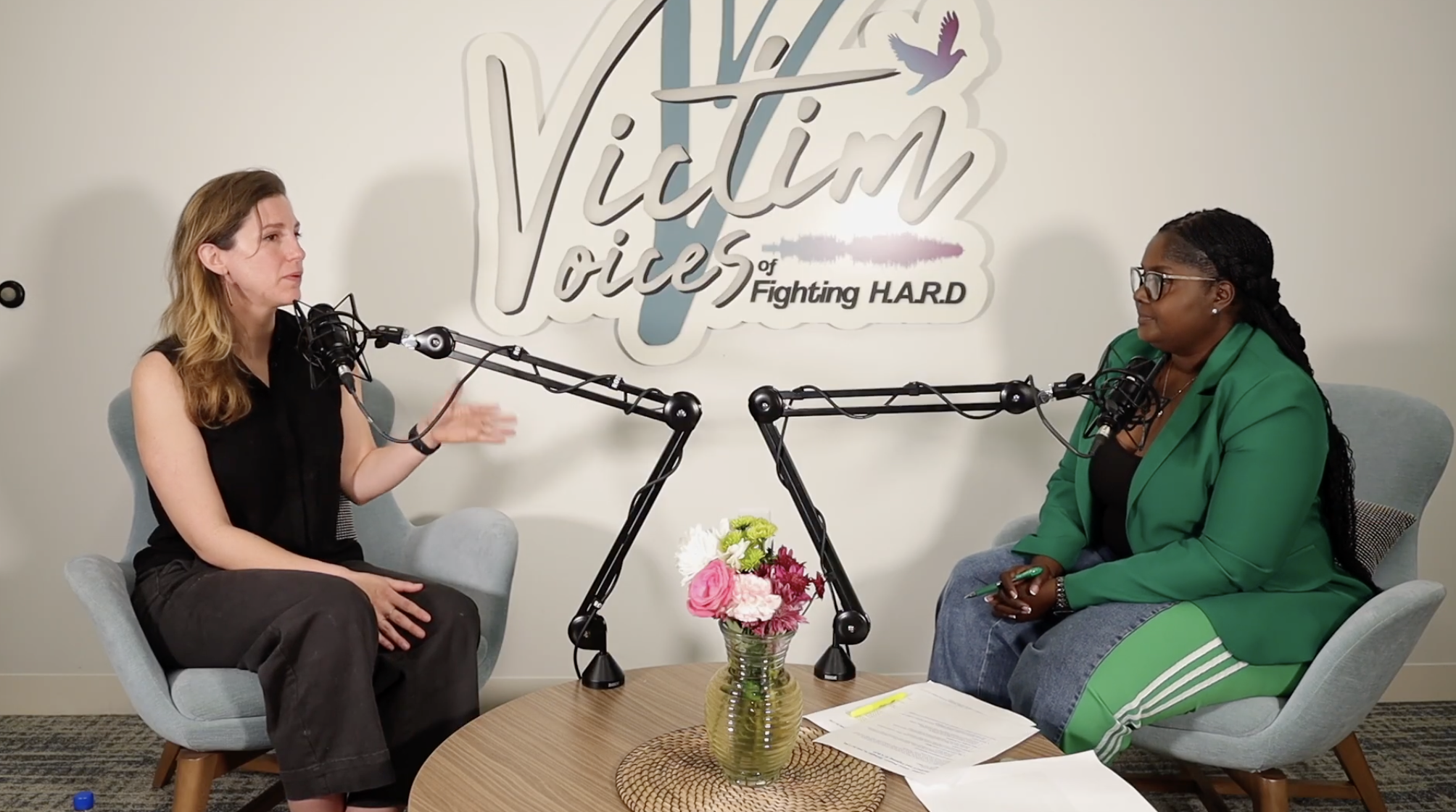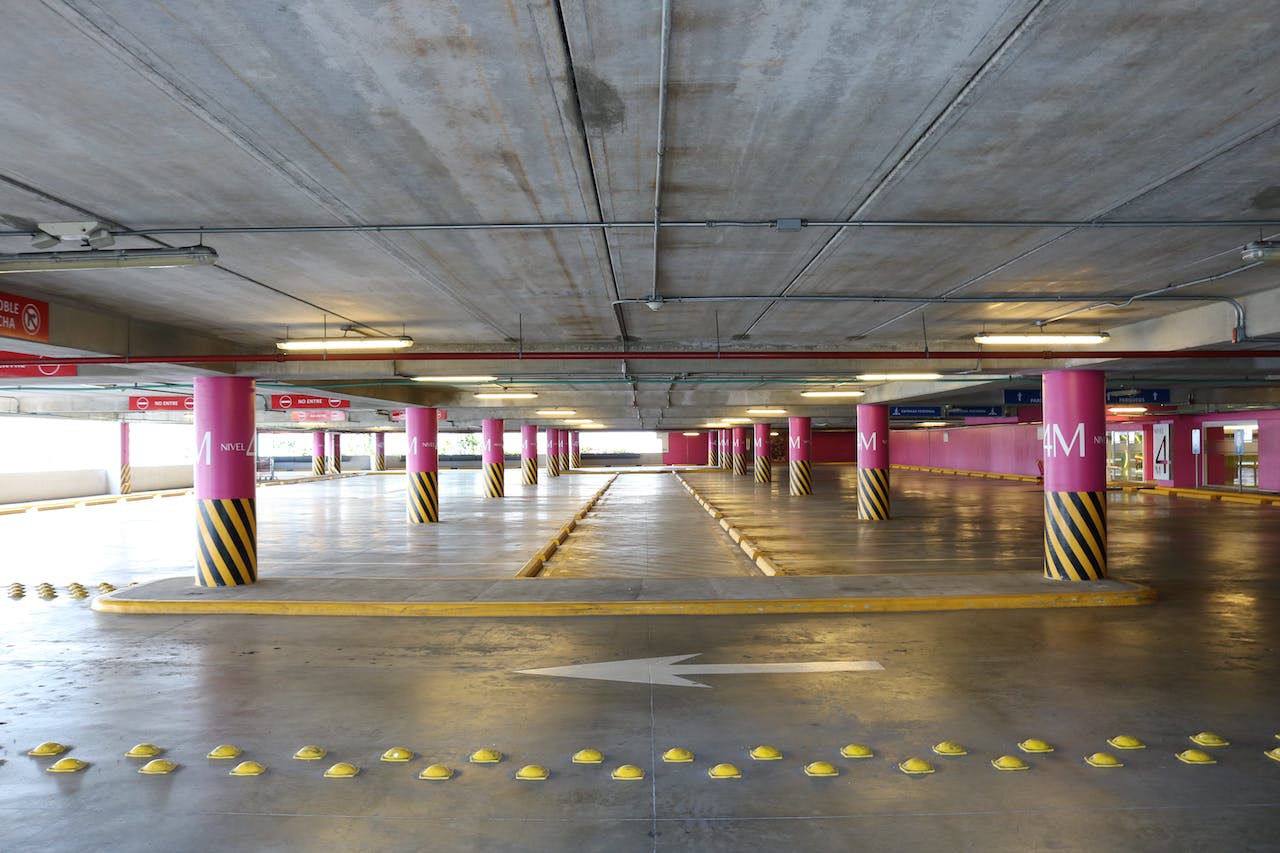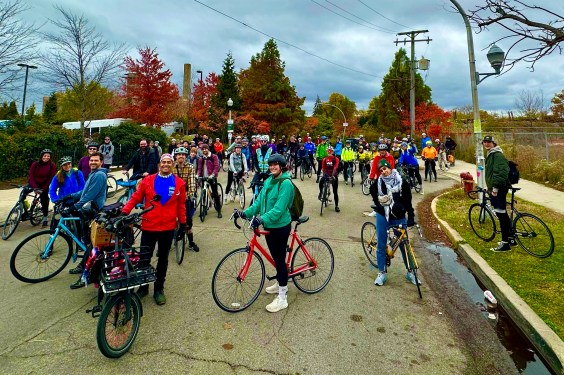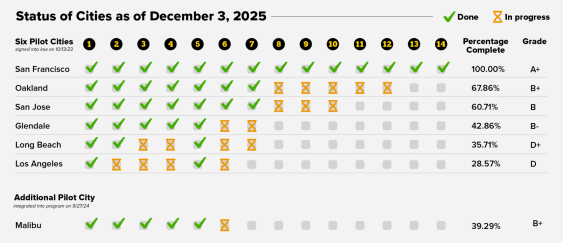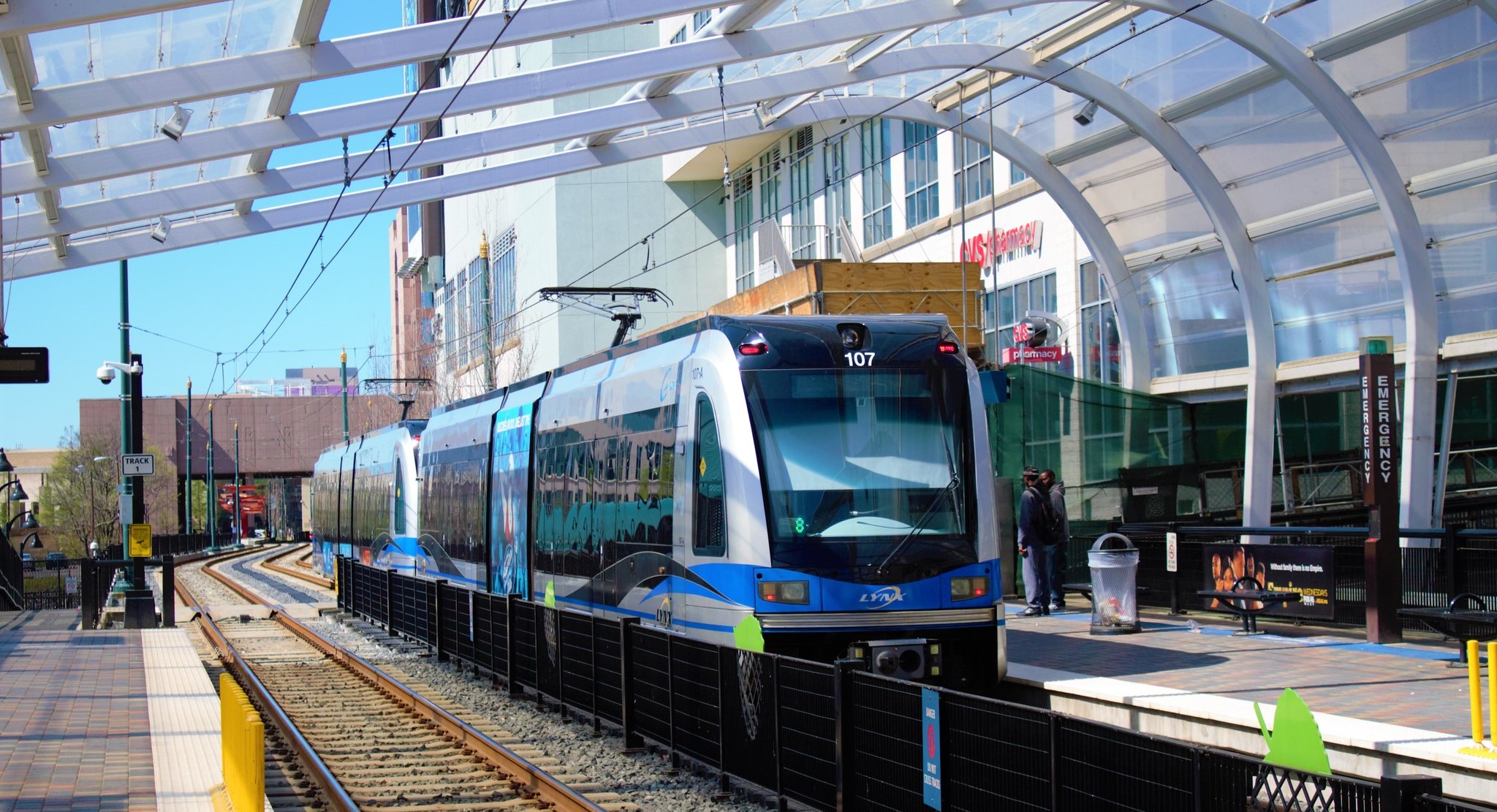A powerful coalition of advocacy organizations is pushing state departments of transportation to ratchet down the harm being unleashed by President Trump's Department of Transportation.

More than 100 powerful national and state transportation reform organizations in the country recently announced that they're joining forces as the Clean RIDES (Responsible Investments to Decrease Emissions in States) Network, launching a full-court press to challenge state DOTs across America to adopt better policies.
The initiative will start with seven states — California, Illinois, Maryland, Michigan, Minnesota, New York, and Pennsylvania — that the group believes are best positioned to make big changes to their way of doing business, with state-level groups in each of those communities leading the charge on the ground.
The campaigns will be tailored to each community's unique challenges and political realities, but all will focus on the same core principles: getting decision-makers to halt road-widening projects, focus on maintaining the roads they've already got, and invest heavily in walking, biking, transit, and targeted electric vehicle investments instead.
The national groups on the list, meanwhile, will offer technical and strategic knowledge to which grassroots organizers don't often have access, while building momentum to take the fight to more states over time.
The group estimates that implementing key policy changes in those seven states could put them within arm's reach of surface transportation emissions goals by 2050 — and in the process, organically inspire other communities to follow their lead.
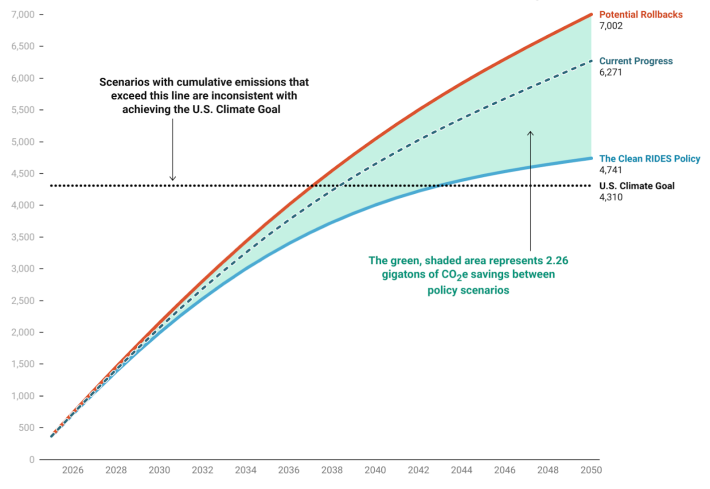
"Even though transportation is now the largest source of greenhouse gasses, [it does not] get the same amount of attention as other areas, like housing or energy provision," said Connor Descheemaker, statewide campaign manager for Transit for All Pennsylvania, which is leading the Keystone State's effort. "Being able to focus on having a climate lens and being able to talk about transit funding [in this way] — it was really exciting to us. Because we know that we're not going to get all the way to our climate goals just from EVs."
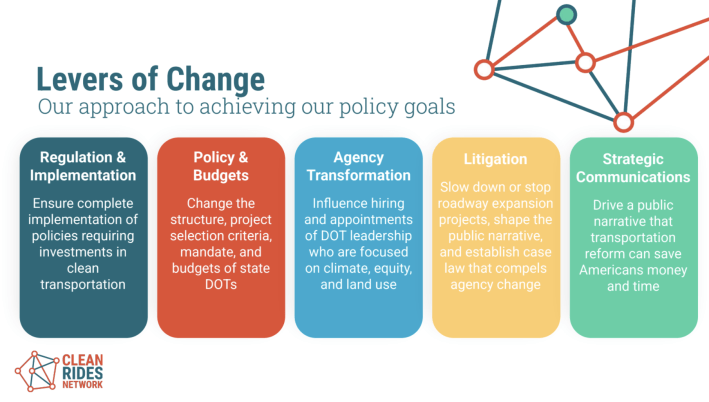
The seeds of the Clean Rides Network were actually planted more than a year ago, before the Trump administration started taking a chainsaw to federal sustainability efforts nationwide.
By then, advocates for transportation reform had confirmed that Bipartisan Infrastructure Law — which the Biden administration touted as "the first infrastructure law in U.S. history that acknowledges and addresses the climate crisis" — was actually on track to increase transportation emissions, thanks in large part to state DOTs, who were granted direct control over nearly 70 percent of the money in bill and largely devoted it to auto-centric uses.
"Because the states continue to operate under the status quo of devoting most of this federal funding to roads and highways, [the Bipartisan Infrastructure Law] wasn't really the transformative moment that it could have been," said Hana Creger, associate director of Climate Equity for Greenlining Institute, which is helping to lead the Network. "[We needed to] figure out how we could make reforms in these states, in a way that is shifting funds from highways to walking, biking, public transit, and electrification, while centering equity and the communities that are most underserved."
The need to reform state transportation policies rapidly gained urgency when the Trump administration took office, and quickly began attempting to illegally claw back any sustainability-related projects funded by the other 30 percent of the Bipartisan Infrastructure Law, which were dedicated to discretionary grant programs under direct federal control.
"States are now our only line of defense to secure transportation projects that are going to deliver on climate, that deliver to underserved communities, and that are going to ensure we're addressing transportation in a way that's not just providing Band-Aid solutions while expanding roads that ultimately we lead to more traffic," added Creger. "[It's about] addressing the root cause of why our transportation system is so broken in the first place."
Even before the Clean RIDES Network launched, Creger said national and state groups alike were hearing about it through the grapevine — and clamoring to get involved.
"That just speaks to the hunger and the desire across the country," she added. "[These are people in] geographically diverse places who are realizing that it's the state departments of Transportation that really hold so much of the power and the funds — that they are the ones that ultimately need to be targeted for these reform efforts."
Moving the needle at any state DOT, though, can be a daunting challenge for grassroots groups, who are often made up of scrappy alliances of riders and transit workers who don't always have the expertise or resources to challenge some of the most moneyed and powerful public agencies in America.
National organizations, meanwhile, have more resources and technical knowledge, but may not know the hyper-specific political and legislative realities of every state they need to influence — and they almost never have the relationships with people on the ground necessary to organize effective, multi-year campaigns.
The beauty of the Clean RIDES network, participants say, is that it brings those two sides of the coin together like never before — and allows them to strategize together to make real change.
"We can see what's working in other states across the political spectrum — blue, red, and purple," added Descheemaker. "And to be able to connect to folks who can do the modeling on things like vehicle miles traveled, and help us identify how much money we need in operations to restore service to certain target goals — it's just so powerful ... It gives us more tools to be taken seriously by power brokers at the DOT, in the legislature, and in transit agencies."
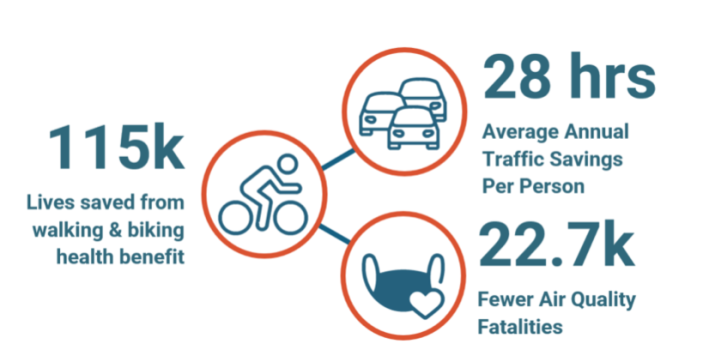
To really be successful, though, Creger argues that Clean RIDES will need to make the case to the American public that less auto-focused transportation policy will lower their bills, get them out of traffic jams, save lives in crashes, save lungs from pollution, and address historic inequities — and do it all in an era when the federal government is actively erasing any evidence of car dependency's role in creating those crises.
With more than 100 organizations working together, though, she's confident they can get the message across.
"Our country's transportation system literally is not working for anyone, rich or poor, urban or rural," Creger added. "If you drive, it's your second-highest expense, and you're stuck in traffic. If you take transit, it takes you too long to get where you're going. If you walk or bike, you're at risk of you losing your life. ... I think the one thing we can all agree on is something needs to be done differently, but there's hundreds of billions of dollars being poured into the status quo. And I think that's the beauty of Clean RIDES; it's bringing together advocates across the spectrum."
